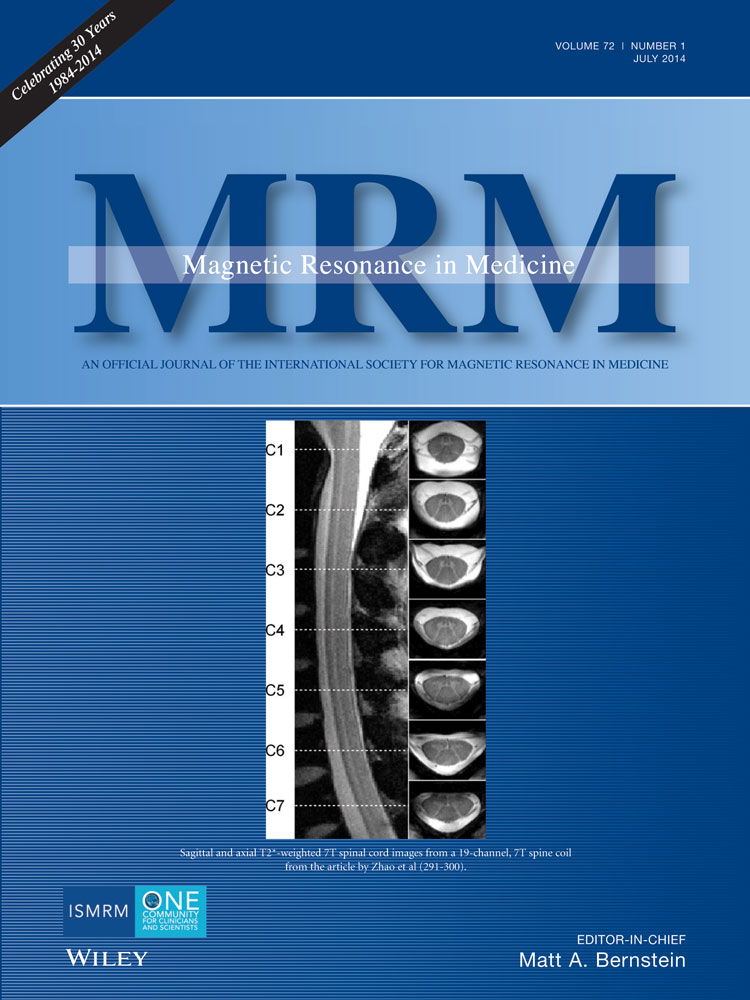7 Tesla MRI with a transmit/receive loopless antenna and B1-insensitive selective excitation
Abstract
Purpose
Use of external coils with internal detectors or conductors is challenging at 7 Tesla (T) due to radiofrequency (RF) field (B1) penetration, B1-inhomogeneity, mutual coupling, and potential local RF heating. The present study tests whether the near-quadratic gains in signal-to-noise ratio and field-of-view with field-strength previously reported for internal loopless antennae at 7T can suffice to perform MRI with an interventional transmit/receive antenna without using any external coils.
Methods
External coils were replaced by semi-rigid or biocompatible transmit/receive loopless antennae requiring only a few Watts of peak RF power. Slice selection was provided by spatially selective B1-insensitive composite RF pulses that compensate for the antenna's intrinsically nonuniform B1-field. Power was adjusted to maintain local temperature rise ≤1°C. Fruit, intravascular MRI of diseased human vessels in vitro, and MRI of rabbit aorta in vivo are demonstrated.
Results
Scout MRI with the transmit/receive antennae yielded a ≤10 cm cylindrical field-of-view, enabling subsequent targeted localization at ∼100 μm resolution in 10-50 s and/or 50 μm MRI in ∼2 min in vitro, and 100−300 μm MRI of the rabbit aorta in vivo.
Conclusion
A simple, low-power, one-device approach to interventional MRI at 7T offers the potential of truly high-resolution MRI, while avoiding issues with external coil excitation and interactions at 7T. Magn Reson Med 72:220–226, 2014. © 2013 Wiley Periodicals, Inc.




